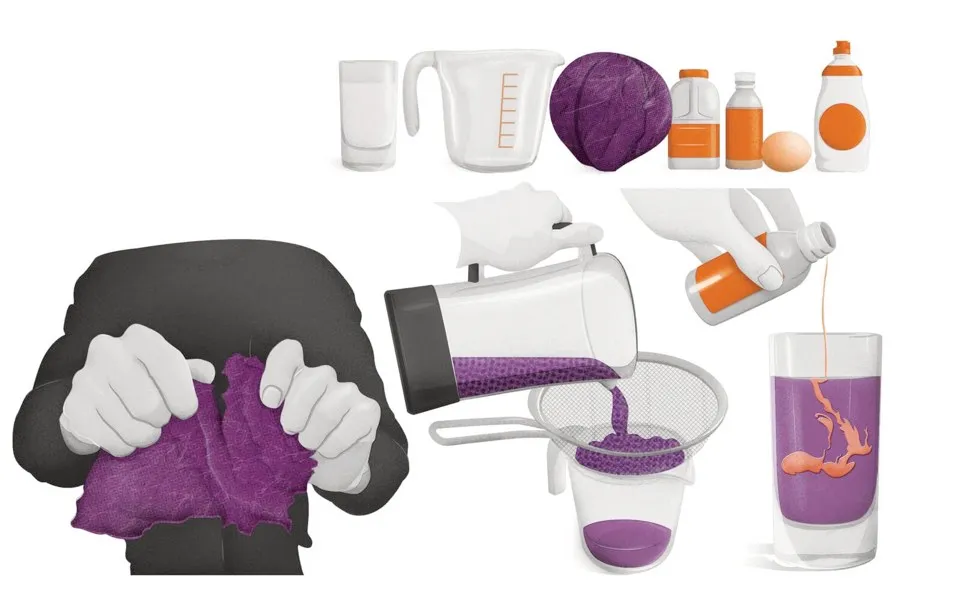What you'll need
- 3-4 red cabbage leaves
- Blender (optional)
- Warm tap water (400ml approx)
- Sieve
- Jug
- Drinking glasses
- Substances to test, such as: lemon juice, vinegar, washing-up liquid, baking soda, milk, shampoo,
What to do
- Tear up cabbage leaves and place in blender.
- Cover cabbage leaves with the warm water.
- Blend cabbage and water until the water turns dark purple. (If you don’t have a blender, finely chop the cabbage leaves and pour boiling water over them. Allow to cool before sieving into a jug. Go to step 5.)
- Pour contents of blender through sieve, keeping the purple liquid in a jug.
- Pour about 50ml of the purple liquid into a glass and add some vinegar. The liquid will change colour!
- Repeat step 5 with the other substances, using a fresh glass for each one. See if you can work out which are acids, and which are alkalis.
- If you’re feeling adventurous, you can also pour a little of the cabbage juice into a glass and use a straw to blow some bubbles through it for about a minute. The juice will gradually change colour!

What's the science
Red cabbage gets its purple colour from a type of natural pigment known as an ‘anthocyanin’.
Blending the cabbage leaves with warm water is a quick way to extract this pigment by making it easier for it to dissolve in water.
Anthocyanins change their colour depending on the pH of the solution they are in, which makes them useful as a pH indicator in chemistry.
The pH scale is a measure of how acidic or alkaline a substance is. The scale goes from 0 to 14, with 0 being the strongest acid, 7 being neutral, and 14 being the strongest alkali.
The anthocyanins in red cabbage are purple in neutral solutions such as water, but turn pink or red when mixed with acidic substances like lemon juice or vinegar, and they turn blue, green or yellow when mixed with alkaline substances such as baking soda and washing-up liquid.
Blowing bubbles through the solution causes carbon dioxide from your exhaled breath to react with the water to form weak carbonic acid. The colour change from purple to pink happens gradually as the solution becomes more acidic.

